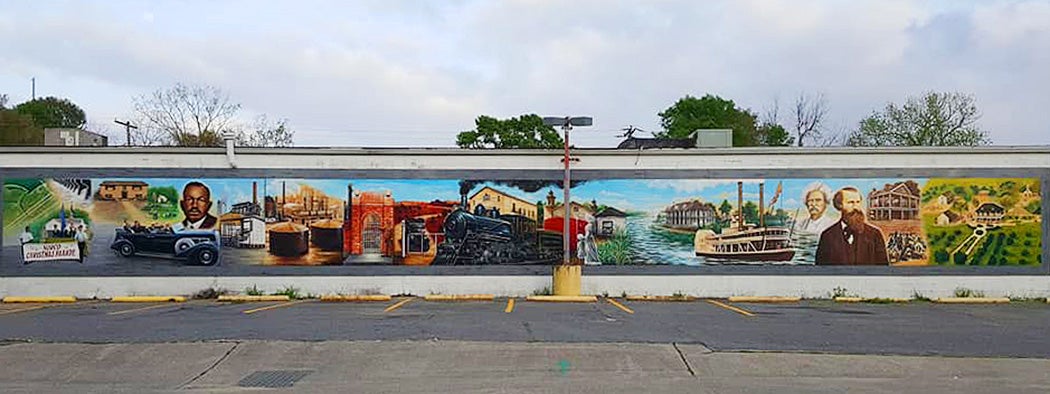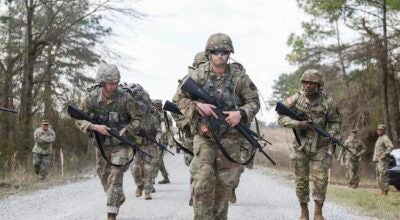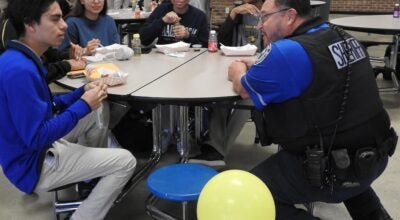Gorgeous mural details Norco’s history
Published 12:00 am Wednesday, April 14, 2021
|
Getting your Trinity Audio player ready...
|
NORCO — A once-empty brick building exterior facing Apple Street in Norco has been totally transformed into a 100-foot-long mural that beautifully illustrates the small town’s history.
South Louisiana artist Hans Geist was tasked with the immense challenge of bringing centuries of rich history to life for the Norco community.
Geist had already completed two historical murals, one in Destrehan on the side of River Road Market and one in downtown Houma. He began the Norco mural project in March 2020 after members of the Norco Civic Association presented him with materials detailing the history of the town.
“To me, it’s amazing that such a small town could have so much history. You would think that with a 100-foot-long wall you could pack it all in, but you really can’t. We just had to highlight some of the major things and create interest to encourage people to want to read more and learn more about the town,” Geist said. “What I like about these murals is having the chance to bring history to the public eye. History has been kind of lost and forgotten in a lot of ways, and unless people actually see it, it’s hard to visualize it.”
Geist researched Norco’s history while working on the conceptual design. The COVID-19 pandemic gave him an opportunity to hone in on the project. Over the course of several months, he painted individual metal panels in his studio. Upon completion, each panel was transported to Apple Street.
Norco resident Lori Lyons watched from her living room window as each panel was placed.
“It’s an amazing piece of art, but also shows so much of Norco’s history,” Lyons said. “It was like watching a big jigsaw puzzle being put together. He would add another panel then another, then another. When the last one with the parade banner went up, I got a little emotional. I think the whole project is fabulous.”
Geist said many who have seen the mural were surprised to learn that the area now known as Norco was first called Sellers.
The history depicted on the mural begins with local plantation homes, including the Hermitage and Diamond plantations. Next to the homes, Geist included the 1811 Slave Revolt, which is remembered as the largest slave uprising in American history.
The large portrait of a bearded man just to the left of the plantations represents Thomas Sellers, the namesake of the town preceding Norco. Born in 1846, Sellers spent his youth working on antebellum riverboats. That’s where he met Samuel Clemens, known by most famous author Mark Twain. Clemens is also presented on the mural between Sellers and the riverboat.
Agriculture central to the development of the area is seen in images of cotton, rice and sugar cane. As technology developed, the addition of a steam engine railway helped spur the development of industry.
Pictures of historic churches and schoolhouses are familiar to those who have resided in Norco for generations, along with images of the local chemical refineries as they developed and changed through the years.
One image on the mural calls back to former president Franklin D. Roosevelt’s motorcade down Apple Street in 1937. A portrait of Albert Cammon Jr. is a reminder of the Civil Rights Movement. According to Geist, Cammon advocated for naming schools after people of color, and his namesake, Albert Cammon Middle School, welcomes students in St. Charles Parish to this day.
The Bonnet Carre Spillway and Wetland Watchers Park also have a spot in the wide spanning mural. At the very end is a modern image of a Norco Christmas Parade banner, honoring a tradition that many in the community look forward to each year.
Geist included small plaques at the bottom of the mural to educate the public with descriptions of the images included.
Geist has lived and breathed art from the time he was old enough to pick up a crayon. He’s worked on murals for roughly 25 years, and some of his other work has included painting logos on the New Orleans Saints Training Camp building and the Southern University basketball arena in Baton Rouge.
“I want to thank the Norco Civic Association and the people of Norco for giving me this opportunity because this is what I do and what I love. I mostly want to thank God for giving me the ability to do this,” Geist said.





